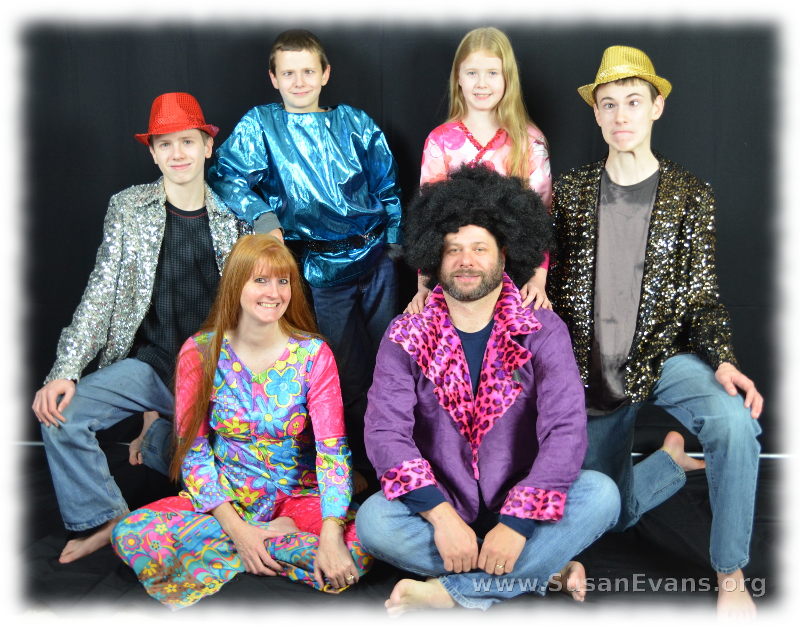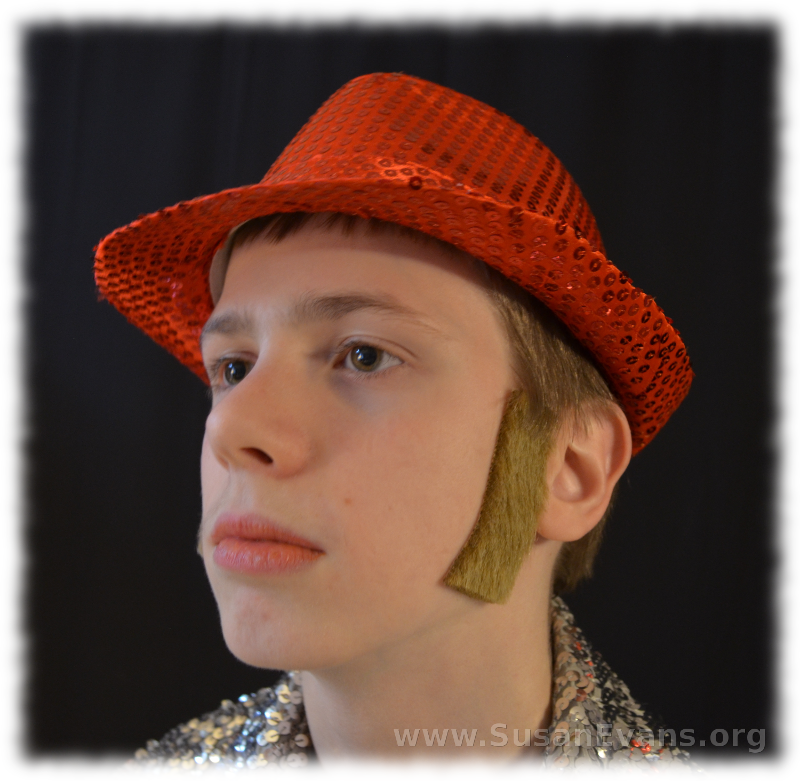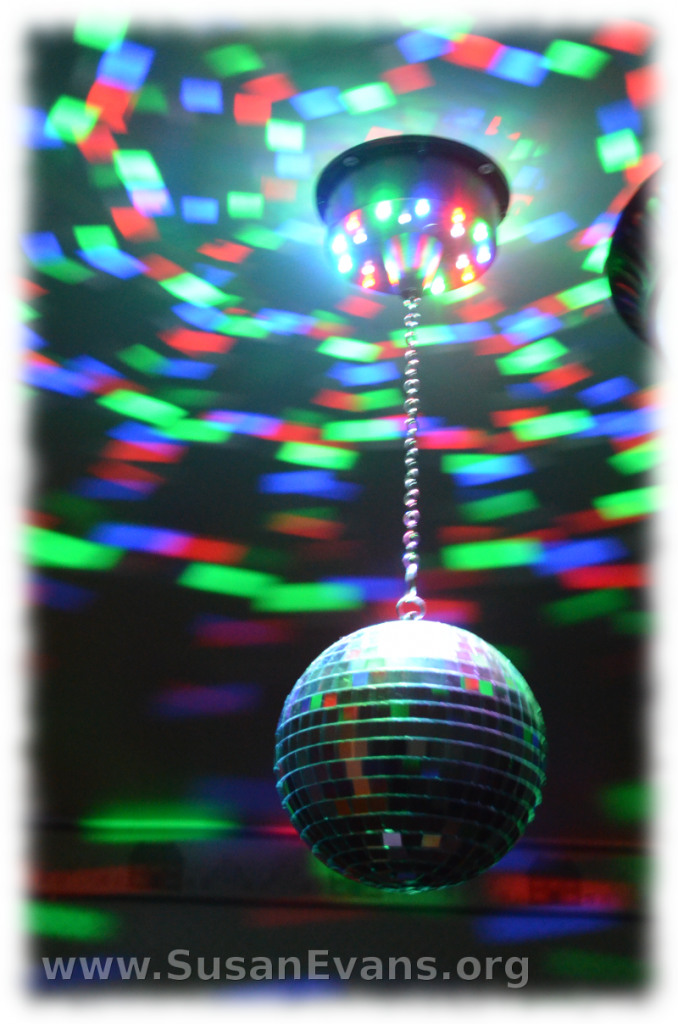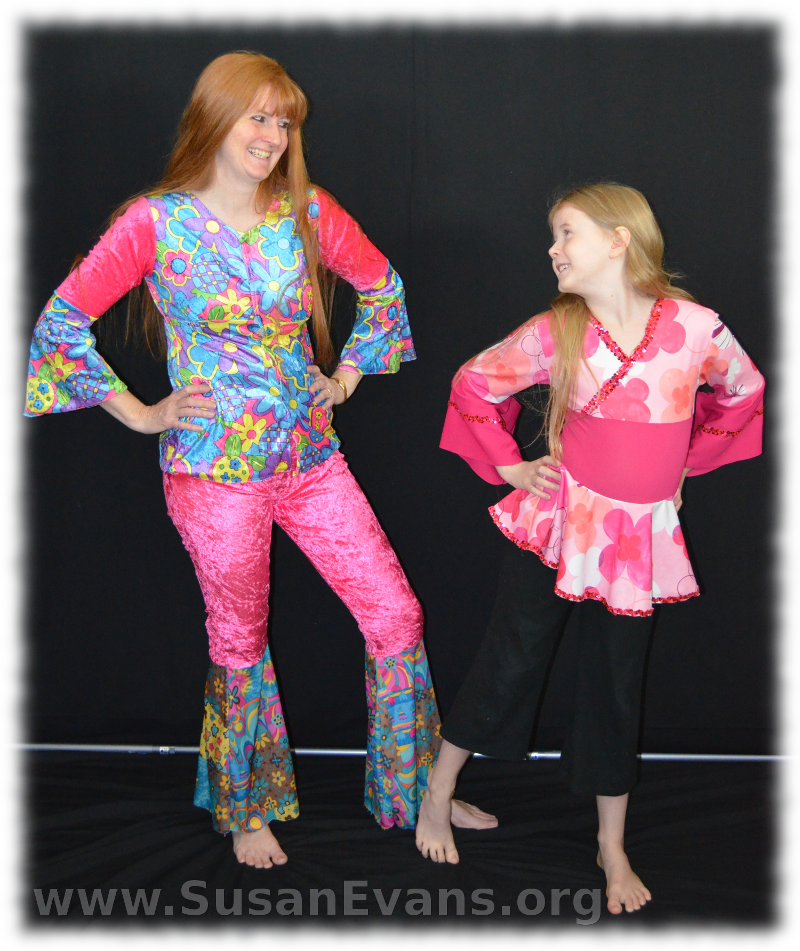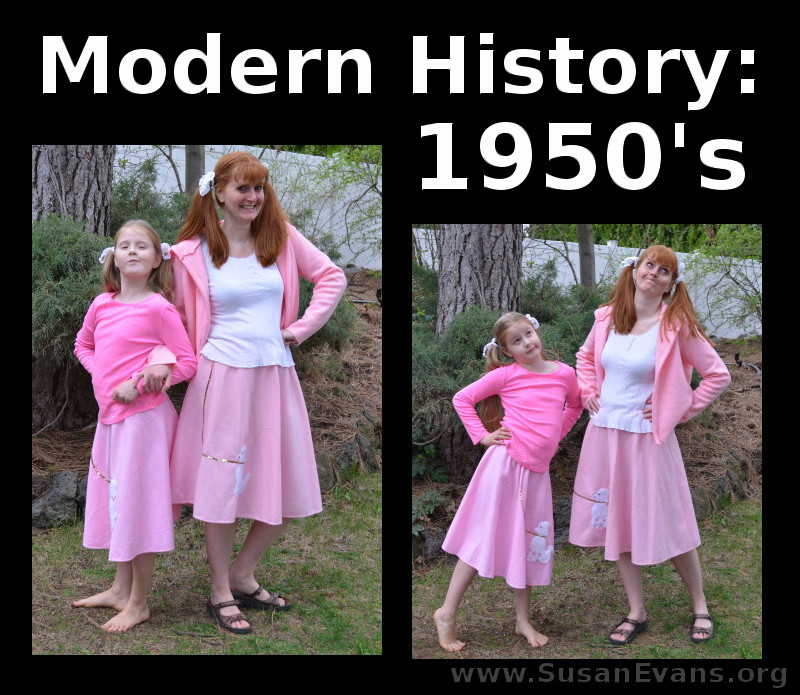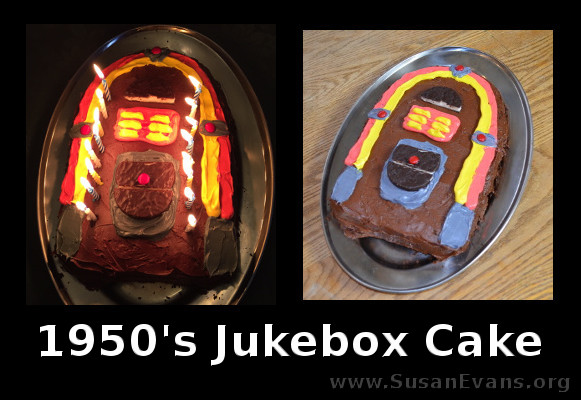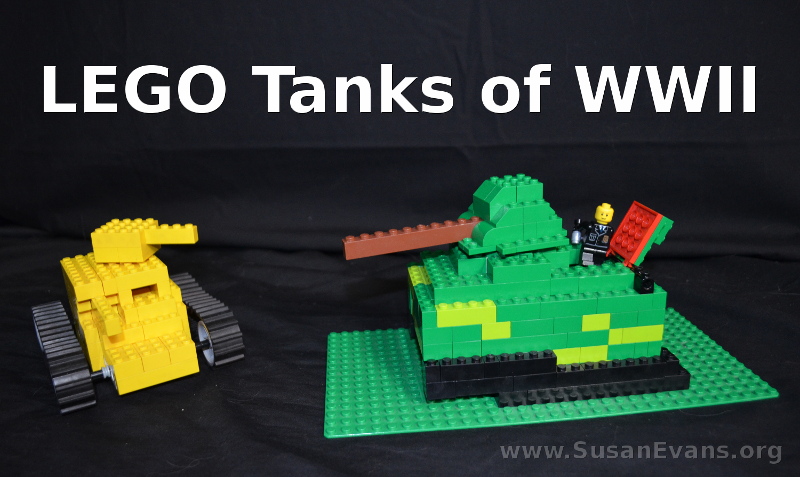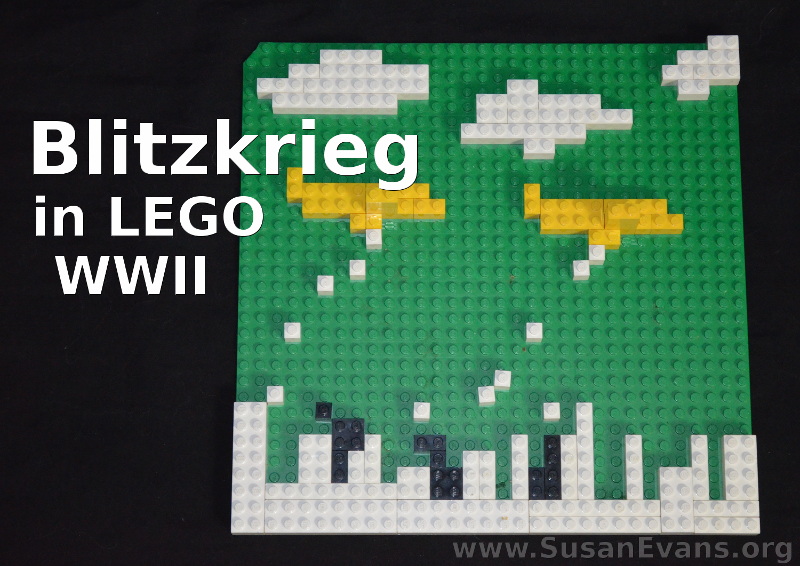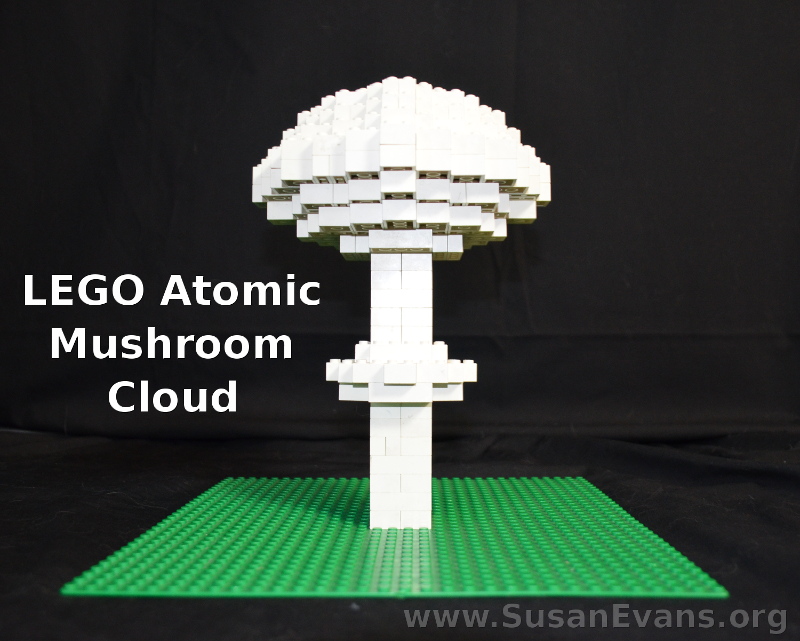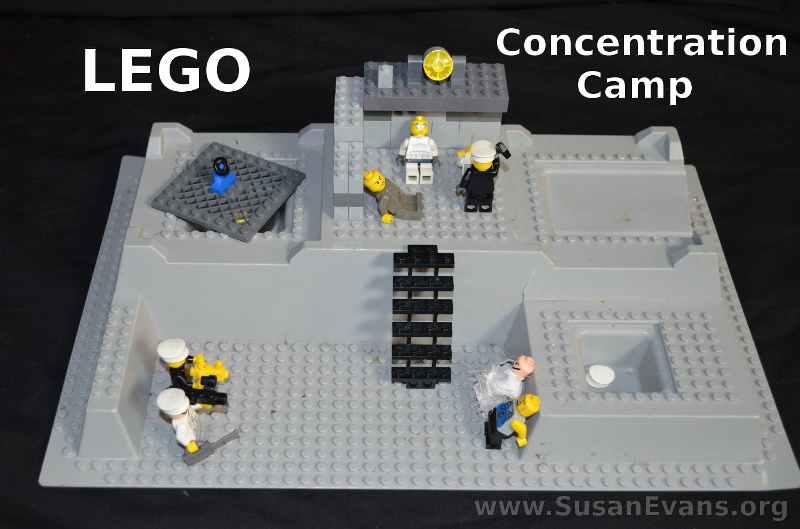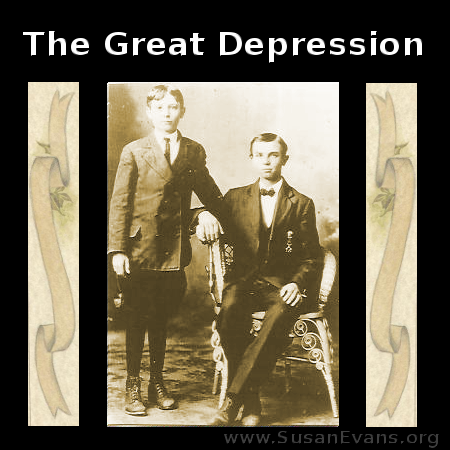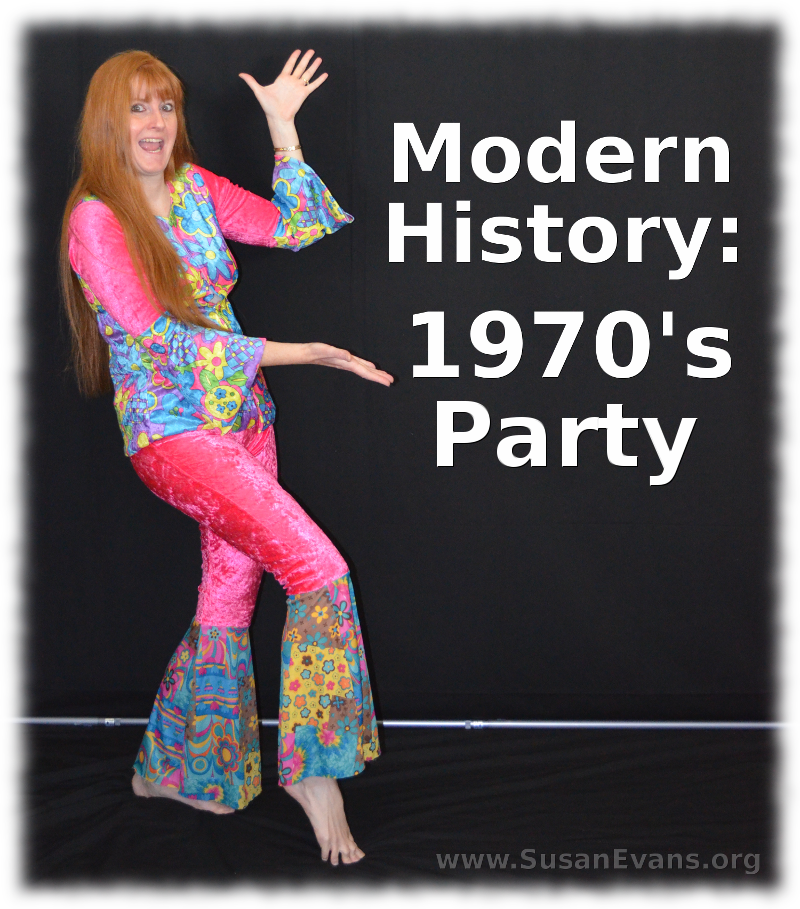 This post contains affiliate links. I was compensated for my work in writing this post.
This post contains affiliate links. I was compensated for my work in writing this post.
During our study of modern history, we decided to throw a 1970’s party. I wanted our kids to experience what the American culture was like in the 1970’s. We read about the 1970’s in the book All American History, Volume II, so the kids were able to learn about the major events from the 1970’s.
Preparing for a 1970’s Party
We began preparing for the party by collecting 1970’s costumes from a local second-hand store during October. We found enough costumes for our whole family, including bell-bottoms for me and an afro for my husband. He was a good sport and looked incredibly crazy, as you can see from the picture. My 13-year-old son wore stick-on sideburns from a local party store.
We played 1970’s music in the background of the party, and we set up a refreshment table with a punch bowl and snacks. We bought some old-fashioned records for ten cents each, and we used packing tape to tape them to the wall as decorations. (See video demonstration to see how the snacks were arranged, along with the records on the wall.)
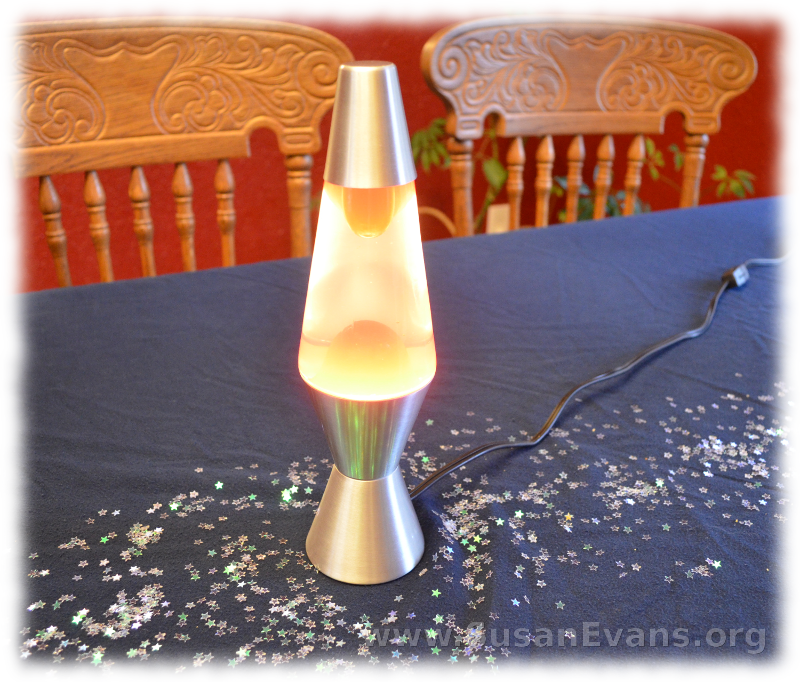 The decorations in the dining room were simple: we threw a dark blue bed sheet on top of the table, threw down some sparkly star confetti, and plugged in a lava lamp that we bought at Walmart for $10. The lava lamp looked like red lava bubbling out of a volcano and was groovy.
The decorations in the dining room were simple: we threw a dark blue bed sheet on top of the table, threw down some sparkly star confetti, and plugged in a lava lamp that we bought at Walmart for $10. The lava lamp looked like red lava bubbling out of a volcano and was groovy.
1970’s Cake
Speaking of groovy things, here is our 1970’s record cake! I show you how we made this cake in the demonstration video at the bottom of this post. It was super easy and fun to make, but we needed an extra large cake pan. We personalized the information in the center of the circle by printing it out as a green circle with the words on it. We laminated the circle with packing tape so that the icing wouldn’t soak through it.
 An Old Picture of Me in the 1970’s
An Old Picture of Me in the 1970’s
We interrupt this party description to give you a real photo from the 1970’s. Yes, I was alive during the 1970’s. (I know, right? There’s no way I’m that old!) I’m the red-head on the right. That’s my gorgeous mom, wearing those bell-bottoms, yes, the genuine thing. Notice the 1970’s hairdo on my mom. My mom is holding my younger sister, and by big sis is posing in her 1970’s kid clothes.
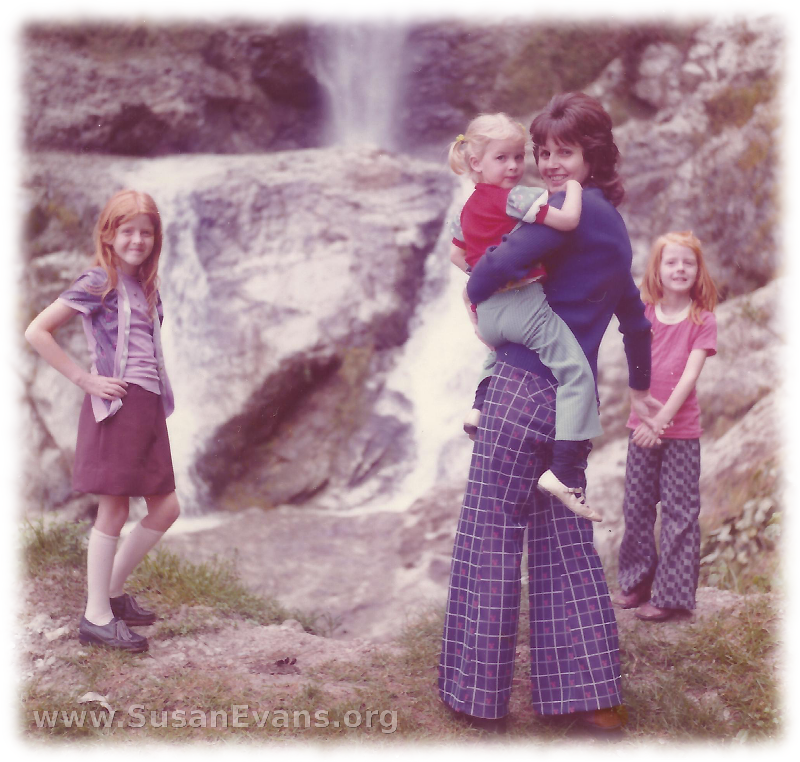 1970’s Disco Ball
1970’s Disco Ball
We resume our party description by adding a disco ball, which we attached to the ceiling. It was mesmerizing to watch the ball spinning around after turning off the lights. My daughter and I were lying down on the floor watching the cool patterns on the ceiling, like a kaleidoscope of colors.
How to Throw a 1970’s Party
1970’s Couple
My husband posed with me in this cute picture:
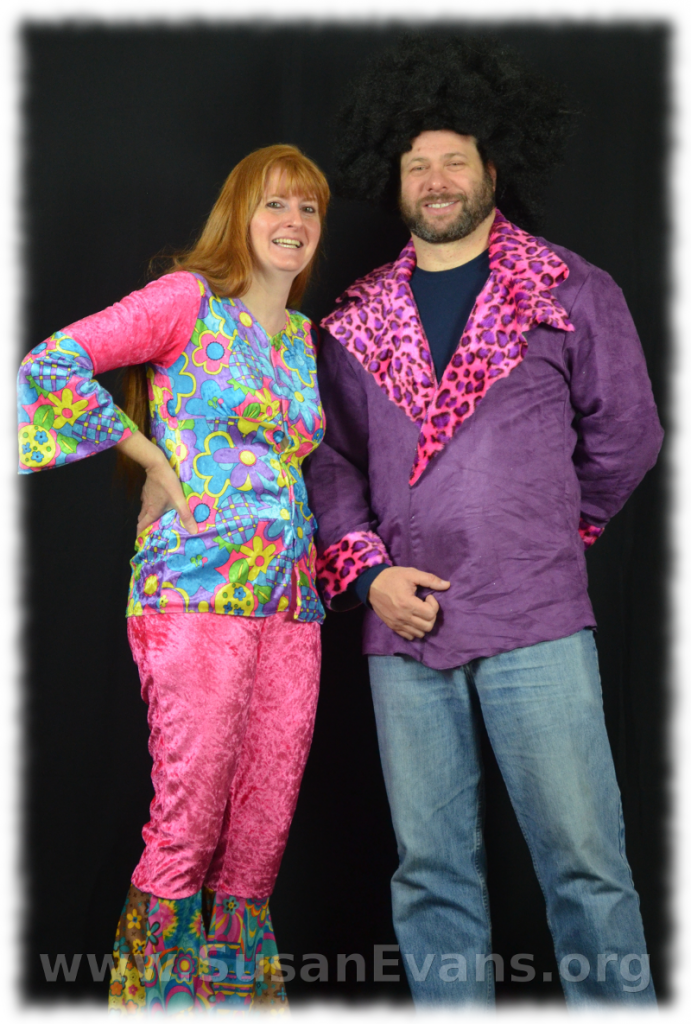 We had so much fun posing in our 1970’s costumes! Why not throw a 1970’s party of your own?
We had so much fun posing in our 1970’s costumes! Why not throw a 1970’s party of your own?
